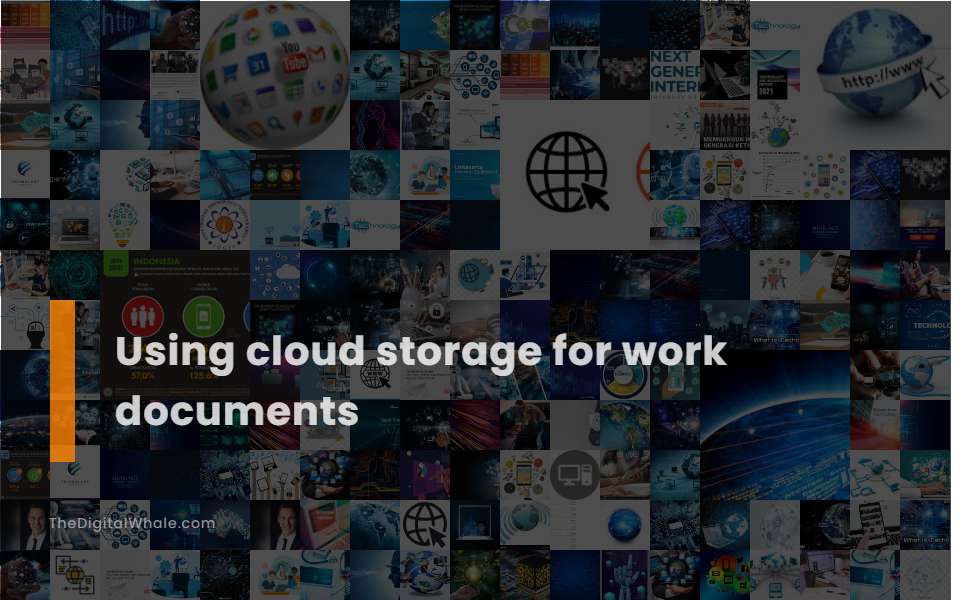Using Cloud Storage for Work Documents
How does a cloud storage account work? How can I store my documents and records in Dropbox Cloud storage? Let's find out more about Using Cloud Storage for Work Documents.

Enhanced accessibility and collaboration
Cloud storage enhances accessibility and collaboration by allowing multiple users to access and edit documents simultaneously from any device with an internet connection, eliminating the need for emailing multiple versions and ensuring everyone works on the most up-to-date file. This facilitates real-time collaboration, streamlined file sharing, and robust version control, making it ideal for distributed teams and global collaboration. For more insights on document management in the cloud, visit the article on Cloud Storage Benefits.
Improved security and disaster recovery
Using cloud storage for work documents enhances security through data encryption, access control, and network security, while also providing robust Disaster Recovery capabilities that ensure business continuity by replicating data and applications to a remote cloud-based server, reducing downtime and minimizing the effects of outages.
Increased productivity and efficiency
Cloud storage increases productivity and efficiency by providing a centralized, web-based interface for all files, eliminating the need to hunt through local folders, and offering robust file search and document tagging functionalities to quickly locate specific documents. Additionally, it facilitates real-time collaboration and automated version control, streamlining workflows and reducing manual intervention. Learn more about these benefits on the Kraft Business Blog.
Remarkable scalability and cost-effectiveness
Cloud storage offers remarkable scalability and cost-effectiveness by allowing users to easily upgrade or downgrade storage space based on current needs, eliminating the risk of overspending on unused capacity and reducing long-term costs through pay-as-you-go pricing models. This technology provides virtually unlimited scalability, enabling organizations to scale up and down with demand, and it offers financial benefits by eliminating the need for hardware purchases and maintenance. Users only pay for the storage they actually use, making it a pragmatic choice for businesses looking to streamline expenses. For more insights into how this technology can transform your operations, visit Kraft Business.
Centralized document management
Cloud-based document management centralizes data in the cloud, allowing all work documents to be stored in one place, reducing dependence on local storage, and enhancing productivity through robust search features and automated backup routines. A Cloud-Based Document Management System simplifies the creation, editing, archiving, and retrieval of documents, ensures version control, and provides secure access with permission controls, facilitating collaboration and compliance.
Related:
What is the open office layout? How much can an open office layout save you in terms of energy use? Let's find out more about The Pros and Cons of Open-Office Layouts.
Real-time editing and version control
Using cloud storage for work documents with real-time editing, as seen in Dropbox, allows multiple team members to edit a single file simultaneously, with instant updates and collaborative tools for efficient workflow and feedback management. Additionally, integrating version control enables the tracking of changes, branching of projects, and the ability to revert to previous versions, enhancing collaboration and data management.
Robust file search and tagging functionalities
Cloud storage enhances document management through robust file search and tagging functionalities, allowing users to quickly locate documents using keywords, filters, and tags, which can be applied across multiple folders to connect and organize information efficiently. Utilizing Cloud Document Storage offers advanced search capabilities and tagging features, enabling users to categorize and retrieve documents swiftly, streamline workflows, and boost productivity by accessing and managing files from any device with an internet connection.
Granular access control using IAM and ACLs
For granular access control in Cloud Storage, you can use Identity and Access Management (IAM) for broader, project-level permissions and Access Control Lists (ACLs) for fine-grained, object-level permissions. IAM is recommended for managing permissions at the bucket and project levels, while ACLs are useful for customizing access to individual objects and ensuring interoperability with other systems like Amazon S3.
Protection against accidental and malicious data deletion
To protect work documents against accidental and malicious data deletion in Cloud Storage, features like soft delete, object holds, and bucket locks can be utilized. These features allow for the retention and restoration of recently deleted data, prevent accidental or malicious deletions, and enforce data retention policies. For more information on these protective measures, visit the official Cloud Storage website to explore how they can secure your data effectively.
Automated security solutions for malware and sensitive data detection
In today's digital landscape, ensuring the safety of cloud and on-premises storage has become paramount. Solutions like MetaDefender Storage Security offer robust automated protection by utilizing cutting-edge technologies such as Multiscanning, Deep CDR, and Proactive DLP to effectively identify and thwart potential malware and sensitive data breaches. Similarly, innovations like Cloud Storage Security play a crucial role by scanning files within cloud environments, like Amazon S3 buckets, to identify malicious threats, with remedial actions that can include deleting, quarantining, or repairing affected files. Meanwhile, Microsoft Defender for Storage delivers a comprehensive cloud-native malware scanning service, fueled by Defender Antivirus and Microsoft Threat Intelligence, to secure Azure storage through on-upload scanning and automated processes, effectively preventing malware from dispersing within cloud storage accounts. These solutions create a layered defense strategy, ensuring a seamless and secure data storage experience.
Related:
In what ways is augmented realitybeneficial for workplace safety? What are some benefits of augmented reality at the workplace? Let's find out more about Augmented Reality In the Workplace.
